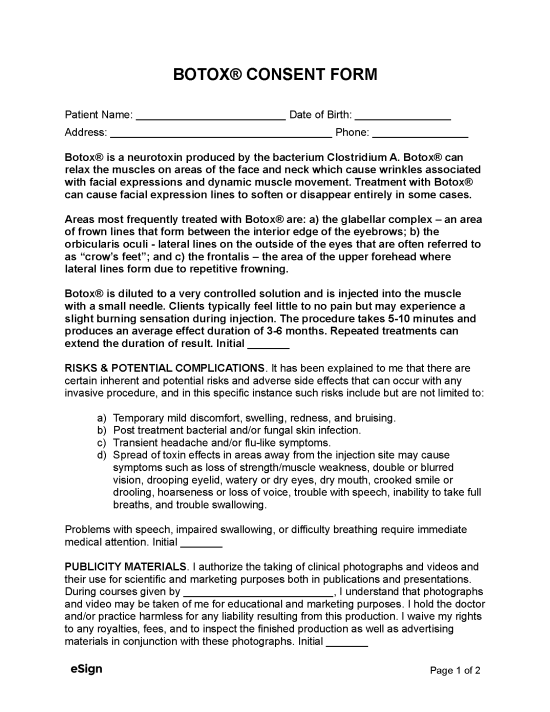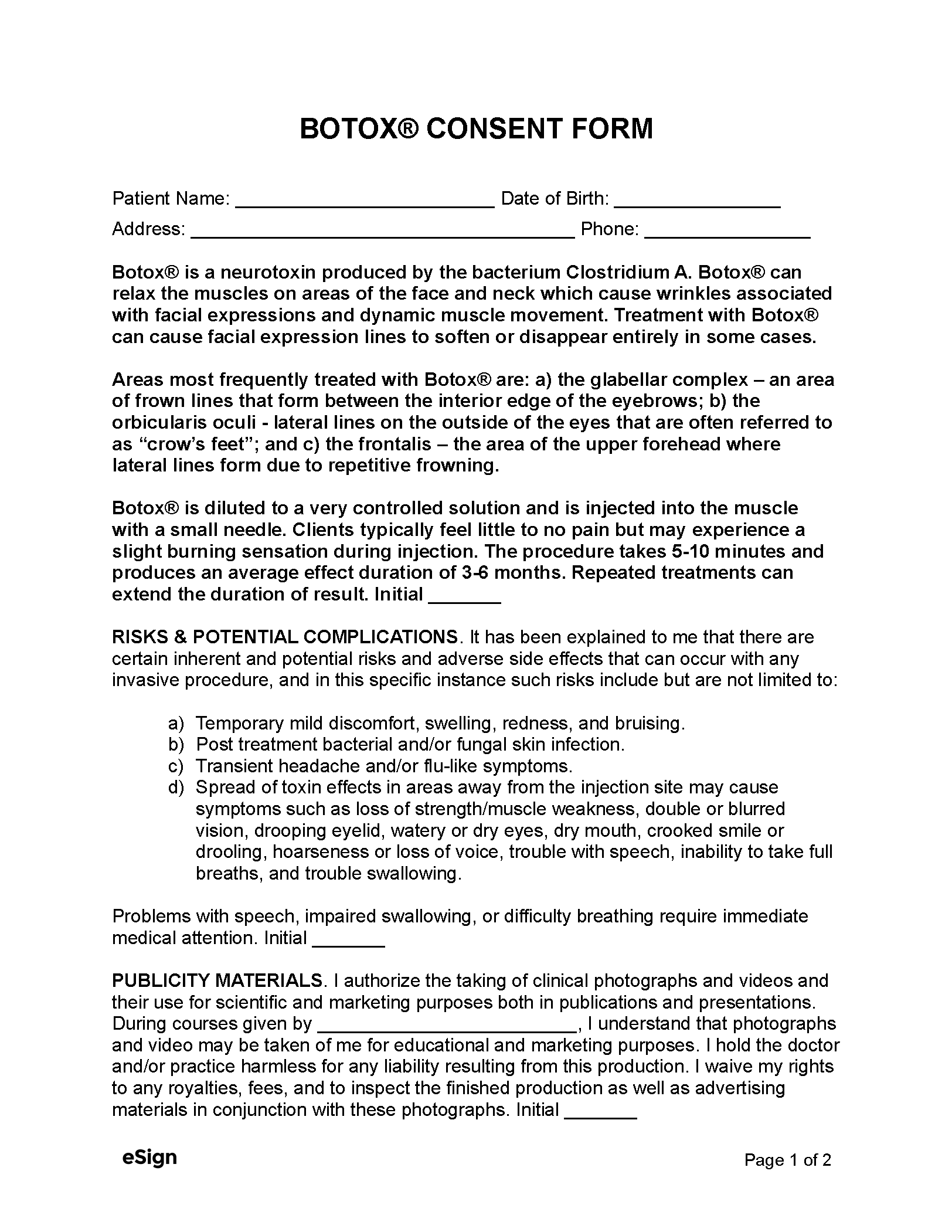Witness Requirement
Federal law does not require the presence of witnesses when consent is given.[1] However, some doctors prefer having an impartial witness present to confirm that the patient understood the document and provided their consent voluntarily.
Informed Consent for Botox Treatment
Medical facilities must obtain informed consent from patients before administering botox.[2] The following is a general outline of what this process entails:
- Describing Botox Treatment: Informing patients about the procedure and its benefits in layman’s terms.
- Outlining Risks: Specifying potential side effects, such as allergic reactions and migraines.
- Discussing Alternatives: Presenting any alternative treatments or procedures.
- Confirming Understanding: Verifying that the patient understands the information, considering factors like language barriers or emotional distress.
After these steps, a consent form must be presented to and signed by the patient (or their legally authorized representative) to confirm that informed consent was obtained.

